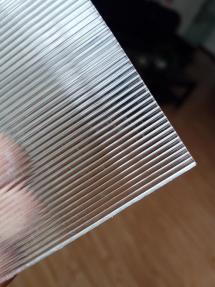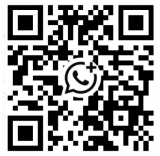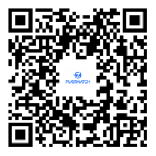Product Content
Category
Construction Materials-Other Building Materials
**Zhuote 3D Technology Company** possesses the technology for 3D lenticular sheets and stereoscopic photography equipment, making it one of the largest manufacturers in China in terms of scale, line count, and data stability for lenticular sheets and stereoscopic images.
**Definition of Lenticular Sheets** — Lenticular sheets refer to materials where one side is rolled into evenly spaced cylindrical lines while the other side is a complete flat plastic material. This lenticular surface can be bonded to printed outputs or images processed through stereoscopic software, presenting lifelike, immersive stereoscopic images with high artistic appreciation value.
**Performance of Lenticular Sheets** — Lenticular sheets are composed of polymer organic materials formed by rolling, which can be freely colored, are odorless, tasteless, and non-toxic. They exhibit rigidity, excellent insulation, and good printability. The melting temperature is 150-180℃, with extremely high transparency, low absorption rate, and light transmittance of 88-93%. The weight is only 1/2 that of ordinary glass, and the shatter resistance is 12-18 times that of ordinary silica glass, with mechanical strength and toughness over 10 times that of ordinary glass, hardness comparable to aluminum, outstanding weather and aging resistance, and can withstand organic acids, bases, salts, and low-level alcohols while being soluble in esters and ketones.
**Applications of Lenticular Sheets**
Widely used in advertising light boxes in hotels, shopping malls, homes, street sides, sports venues, airport terminals, bus shelters, as well as in bridal photography studios, portrait photography, and decorative paintings.
**Imaging Principle of Lenticular Sheets**
Lenticular sheets utilize the principle of light diffraction to decompose polychromatic light and serve as precision optical components with spatial periodic structures. They are composed of numerous ordered convex lenses. When people look through the lenticular sheet at the image behind it, the refractive principle of the convex lenses and their light focusing effect segments the image seen into several viewpoints due to the visual disparity between human eyes. The brain processes and combines these shifted images, forming a depth perception that results in the stereoscopic image seen by the human eye.
**Process Flow of Lenticular Sheets**
Raw materials --- high-temperature melting --- roll forming --- lamination --- cutting --- storage
Illustration of the production of lenticular sheet stereoscopic images
Lenticular Sheet → Processed Image → Bonded Image
**Identification of Lenticular Sheets**
Evaluating the quality of lenticular sheets is quite difficult; Zhuote Technology is willing to work with peers to gradually establish a quality evaluation standard for lenticular sheets. Early design theories suggest that the quality assessment of lenticular sheets must consider materials, molds, blade sharpness, machine amplitude during production, and the ratio of sheet thickness to pitch. The evaluation can be summarized from the following aspects:
1. **Stereoscopic Effect**: The strength of the stereoscopic effect is paramount among all stereoscopic materials. Without it, all else is moot. For materials with the same line count, the stereoscopic effect can differ, necessitating users to select reputable manufacturers with strong technical capabilities.
2. **Transparency (also called Light Transmittance)**: When bonding with images, the material's transparency determines the clarity of the stereoscopic image. Using high-quality lenticular sheets can achieve a transparent and realistic effect by integrating image creation technology with lenticular technology.
3. **Verticality**: A good lenticular sheet should be vertical from top to bottom without any curvature. Curved lenticular sheets can cause halos and image distortion.
4. **View Change Angle**: Taking a point on the stereoscopic image as the observation center, moving the eye left and right will cause the image to jump multiple times. The angle moved between two jumps is the view change angle of the stereoscopic image. A larger view change angle provides more comfort when viewing, but a larger angle often means a weaker stereoscopic effect. The view change angle does not represent the field of view of the stereoscopic image, which is usually over 90 degrees.
**Characteristics of Lenticular Sheets**:
- Strong Stereoscopic Effect: The characteristics of lenticular imaging result in greater stereoscopic effect in lenticular sheets of the same depth of field, making them more realistic and impactful.
- Long Viewing Distance: Approximately 2 to 10 meters, solving the awkwardness of flat stereoscopic images that can only be held in hand, making them suitable for display in various venues.
- Large Format: Theoretically, lenticular sheets can achieve widths of several meters, enriching the application of stereoscopic images. Large-format stereoscopic images, stereoscopic advertising, and personalized stereoscopic customizations are also possible.
- Fewer Lines: The fewer the number of cylindrical lenticular structures on the surface of the material, the more favorable it is for printing production, meeting the needs for high-quality, low-quantity personalized stereoscopic image creation, such as stereoscopic advertising, large-format stereoscopic images, and stereoscopic photographs.
- Durable: The material is thick and not easily damaged, with a flat surface that does not warp or deform, resulting in a long lifespan and easy maintenance and cleaning.
For inquiries, please contact:
QQ: 1354727361
Mobile: 15139228383






 Whats App
Whats App
 PlastMatch App
Scan the QR code
PlastMatch App
Scan the QR code 